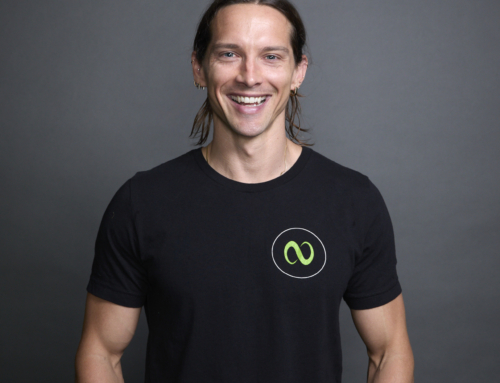
If you’re someone that runs, bikes, lifts weights, plays in a league, does any kind of consistent training, and lets not forget the non-sport of sitting at your desk you should think about having days in your exercise program dedicated to getting or keeping your body organized. Whether it’s the repetitive nature of different sports or the destructive effect of sitting for prolonged periods of time, committing a little time to your structural alignment will pay major dividends.
What does it mean to have an organized body?
It’s when the structure of your bones, muscle, neuro-fascial tissue and organs are functioning in a balanced, energetic way. You feel strong and flexible, have natural poise and your movements feel light, not heavy or sluggish. It’s when your body and mind are functioning together at a high level—where you can run, jump, squat, lunge, push, pull, lift or twist with strength, power and flexibility through a full range of motion, without disruption or injury. This organized scenario creates an optimal environment for joint health, organ health, muscular development and emotional flow/release. So how do we get there?
Here are some Nimble tips for getting organized:
1. Give yourself permission to have deeper body awareness! This takes a little bit
of courage, but bringing your awareness inside your body, to feel how your body is moving and holding itself together, is extremely valuable. Assess yourself–no one knows how your body feels as well as you do! Identify where you’re tight, where you’re weak, where you’re strong, and then get to work. Use your “organization day” to focus on strengthening weaker muscles, opening up tight muscle tissue, and addressing imbalances in your system.
2. Ask yourself this question: Is my exercise routine helping me with my posture or training me out of good posture? I’ve watched people training for hours at a time with hunched shoulders, misaligned lower backs and strained necks. I’ve even seen people read a book while walking on the treadmill! Doing this hinders our natural gait and our functional lines across the body, which in this case run from the latissimus on one side to the gluteus on the other. Examine your own training habits—are you enhancing your posture with your exercises, or working into deeper imbalance and strain?
3. Be open to how integrated and intelligent your body naturally is. Your body was designed to function harmoniously, whether moving or at rest. That harmony is your ultimate goal. To move towards that goal, you can start with isolated movements, but be sure to end in a fully integrated, functional way. For instance, you can train your postural stabilizers (the “core” muscles) first, and progress into the integrated compound movements. A simple example of this progression would be starting with the plank exercise, which engages the core stabilizers, and continuing on to the traditional squat. Functional training prepares you for lifting your heavy bag of luggage, squatting to pick something up from the floor or simply giving someone a big loving hug.
4. Identify where you are prone to tightness, and be consistent in stretching/resetting those muscles. We touched on this already, but stretching muscles helps to keep balance and symmetry in your body, and improves neural flow and oxygen delivery to your tissue. Be aware of the imbalances in your system and address those. If the right hamstring is a lot tighter than the left, for example, give it a little bit more time in your stretching. This will not only help you feel better, but help you function better.
5. Strengthen weaker muscles–the other side of flexibility. Activating weak muscles and strengthening them through a proper exercise progression will also lengthen opposing muscles and assist in proper joint function.
6. Get some professional eyes on you! The earlier statement we made that no knows your body better than you do is only partially true. Working with a trainer/practitioner/coach will help you to understand your strengths, weaknesses and imbalances, and improve your program to achieve more.
A little bit of practice and dedication to these key points will pay major dividends. Having an organized body is the path to longevity! It’s your journey, so I encourage you to trust the guru within.
Namaste
Daniel

